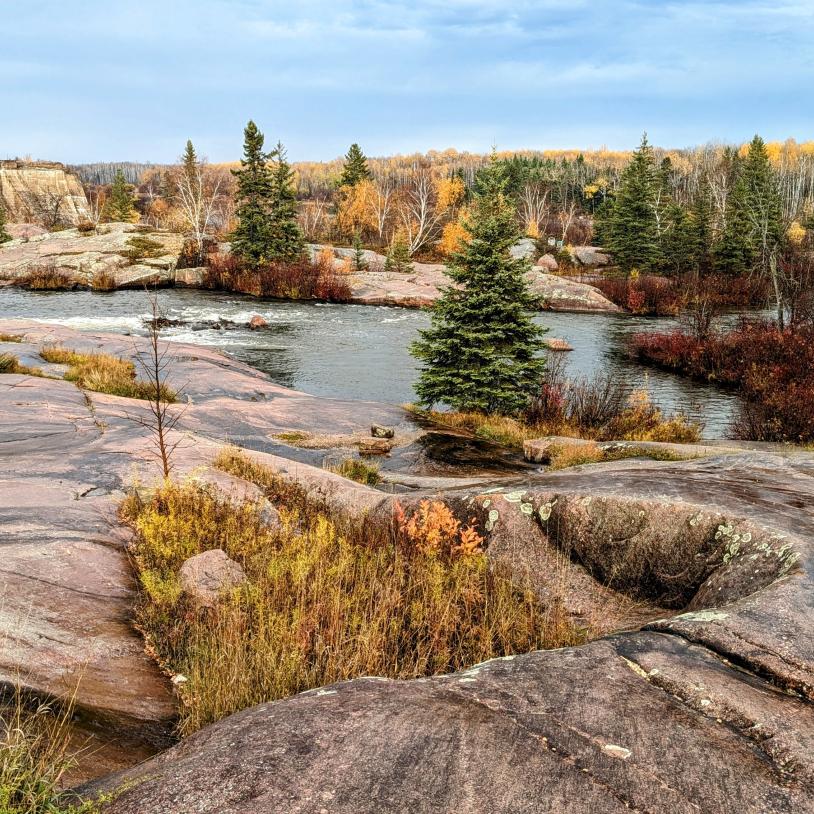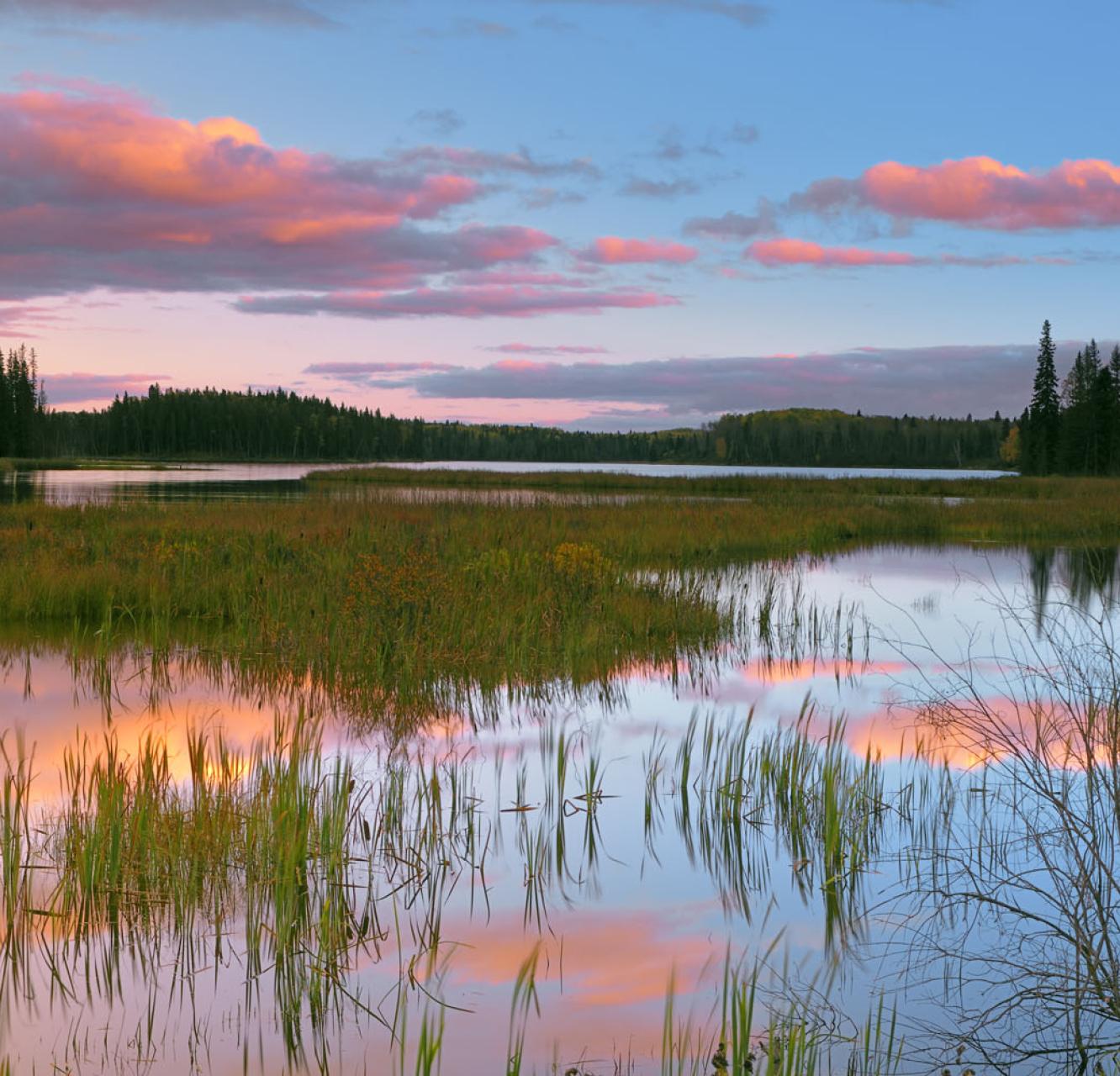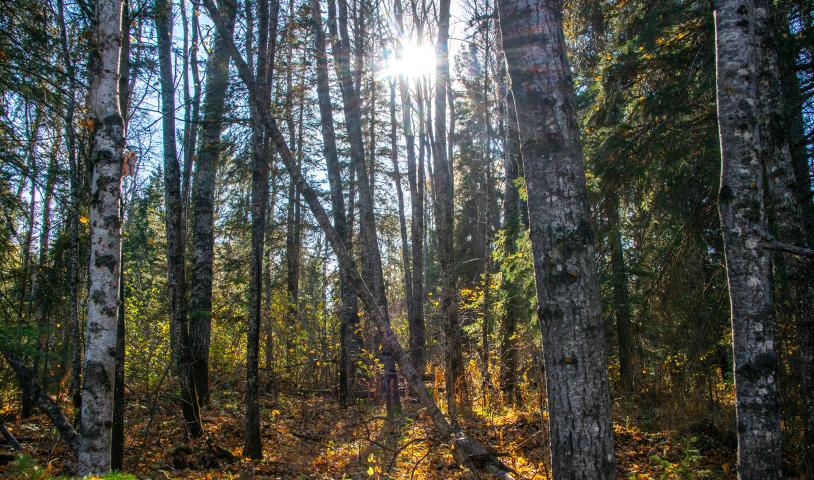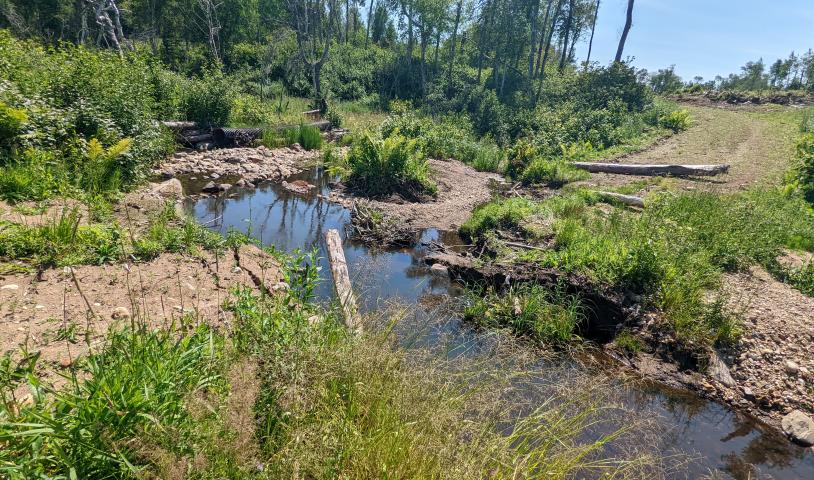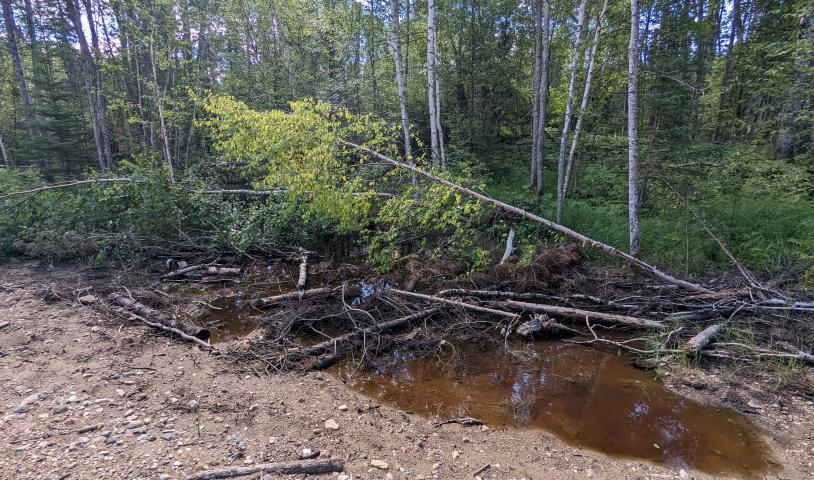Logging NOT the Answer for Whiteshell Provincial Park
Monday, June 23, 2008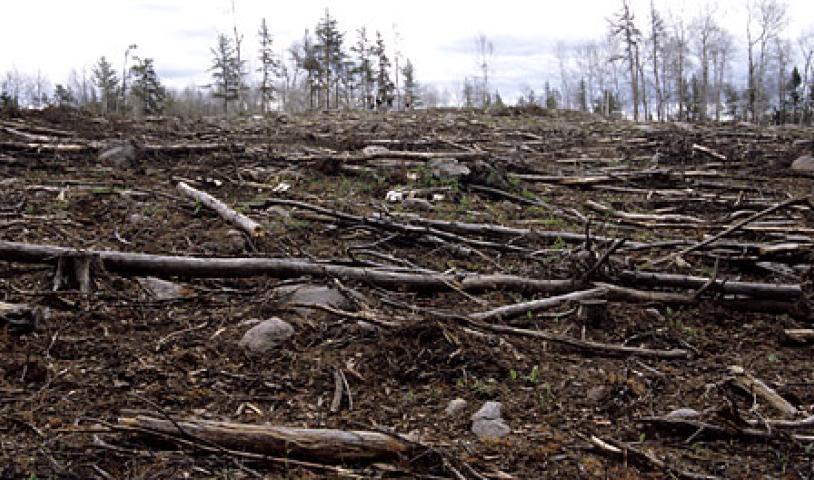
An article in the Winnipeg Free Press on Sunday, June 23 mentioned the logging of Whiteshell Provincial Park. Currently, an area of forest in the Whiteshell that was flattened in a windstorm last summer is being logged to lessen the risk of fire. The article perpetuated some fallacies about the role of logging, fires, and provincial parks. Most Manitobans know that we don't need logging in our parks, and most jurisdictions around the world already ban logging in parks, yet the logging community in Manitoba is clinging to false justification for their continued destruction of our cherished forests.
Read below for the Winnipeg Free Press Article and a response letter from the Wilderness Committee.
When cutting down forests is the right thing to do
Winnipeg Free Press
By Bill Redekop
June 22, 2008
ELMA -- Here's something different--a pro logging story.
Grant Kurian is one of the loggers sweating it out to haul away trees knocked over in the Whiteshell's "blowdown" last year. Grant Kurian's logging company, near Elma, has been working clearing trees knocked over in the Whiteshell Provincial Park's blowdown last year. He says the destruction has created a major fire hazard.
Winds reached speeds of over 150 kilometres per hour in the blowdown, leaving a giant swathe of felled trees in its wake. The dead softwood--mostly jackpine and white spruce--presents an enormous fire hazard unless it's removed. Dried softwoods with the browned needles still on branches will burn like gasoline.
"If a fire ever got really going, that (Whiteshell) park would be gone and everything in it," Kurian maintained.
There are about 3,500 cottages, plus numerous campgrounds and resorts, in the park. So for a change, people are happy to see Kurian and even cheer him. He's used to seeing a different response. A recent example was school children who drew men in the woods with chainsaws and black Xes drawn across them.
"The words we hear are 'bad clearcutting loggers,'" he said.
Kurian doesn't look like Snidely Whiplash. With shoulder length hair, scruffy beard and an earring, he looks more like a guitar player in an aging rock band. He's a third generation logger who's built up one of the biggest logging outfits in Manitoba, near Elma, an hour's drive east of Winnipeg.
Kurian runs Grant Kurian Trucking Ltd. His wife Roberta runs SEER Logging Inc. They operate as separate entities but obviously work closely together. Combined, they employ about 50 people. SEER Logging owns seven chippers costing $1 million each, four bunchers (that bunch timber for making piles) at $500,000 each, and 10 skidders at $250,000 each. The trucking operation has a fleet of 20 rigs costing over $3 million in total.
Kurian has a message people may not like to hear. He argues that trees felled by last year's blowdown were older, weaker trees that wouldn't have been there in the first place excpet for provincial park regulations.
"We went up in a chopper to look at the destruction. It only blew down the mature trees, not the new growth," Kurian maintained. "They were mature forests that, in our minds, should have been harvested."
Harvesting mature trees is healthier for a forest than leaving them standing, he maintains. It replaces nature's way of managing forests: fire. But fire isn't appropriate now because of human habitation (although controlled fire is used extensively to promote healthy forests in Riding Mountain National Park).
Manitoba Conservation now estimates it will take up to three more years to remove downed trees, which are in hard-to-reach areas over rough terrain. Loggers are hauling away timber to pulp and paper mills in Pine Falls and Dryden, Ontario.
Another example of what can happen when a forest isn't managed is the pine beetle that's devastating forests in British Columbia, Kurian said. "The environmental people said it's a natural thing and leave it alone," he said.
Now the pine beetles are spreading and moving this way. It's adapting to our harsher climate and there are signs it's developing an appetite for spruce trees, too. "We have a plague on our hands," he said.
The term clearcutting began in B.C. where loggers clearcut sides of mountains, causing rock slides, he said. The term is now used to describe most logging practises where swathes of mature trees are harvested.
Most trees are harvested that way because stands of trees tend to be the same age and mature at the same time. However, today loggers face hefty fines for cutting new growth in a logging area. Twenty years ago, government officials approved such cutting because it removed obstacles to replanting.
Loggers are also required to leave 50 metre buffers between 400 metres areas that are logged out.
The forestry industry has been devastated in recent years. Dozens of mills have closed across Canada, wiping out 47,000 jobs since 2003, due to factors like the nosedive in American housing, a drop-off in demand for newsprint, and the fact that China can import our timber, process it, and ship it back to us for cheaper than we can process it ourself, said Kurian.
Wilderness Committee Response Letter
This letter is in response to the Sunday, June 22 article entitled "When cutting down forests is the right thing to do". I want to briefly address the concept of a healthy forest in a park.
First, it is good to see the article stresses the importance of logging as a source of employment in rural areas. Logging by its very nature (harvesting a renewable product--trees) can be an environmentally friendly industry, if it is properly managed.
In the article, however, Grant Kurian brings up several questionable points that are often forwarded by logging proponents. The first myth-leading statement infers that if the park was logged there would be less fire hazard. This is followed by a comment that mature trees blew down, and those trees should have been harvested instead of being allowed to get so weak as to blow down. An outright falsehood is perpetuated with a comment saying harvesting mature trees is better for the forest, and replaces the natural management tool that has rejuvenated this forest for thousands of years--fire. Finally the myths wrap up with comments stating fire isn't appropriate for the park any more.
Attempts to suppress fire, which we've been trying to do for 60 years, have failed. The province of Ontario published a 160-page report in 2006 about fire and parks, called Natural fire regimes in Ontario. The following are the second and third statements in the introduction:
"Long term fire suppression…has negatively impacted ecosystem health by causing shifts in species composition, accumulations of biomass, insect infestations, poor regeneration, and degradation of wildlife habitat. Fire suppression has also caused significant accumulations of flammable fuels, which in turn, threaten the surrounding landscape."
What many scientists—and more enlightened governments than Manitoba's—know is that fire suppression does not work and causes more harm than good.
Manitoba's naturally occurring forests have a very short disturbance regime of about 100 years. The natural disturbances that affected forests in Manitoba before development were fire, insect infestation, and blow-downs. Roughly every one hundred years, all forests in Manitoba would suffer the effects of the above-mentioned natural disturbances. The blow-down that occurred in Whiteshell was part of a natural process that this forested areas is capable of dealing with on its own.
Logging is not interchangeable with fire as a forest management tool. Fires help rejuvenate the nutrients in the soil through a chemical process, allowing for healthy forest regeneration. Logging bankrupts the soil of nutrients through a mechanical process (think logging trucks hauling wood—nutrients—out of a forest) and leads to a weaker re-growth of trees. We are losing biological diversity and weakening our forest every time we log.
Mr. Redekop rightly pointed out in this article that prescribed burning is a management process that is used elsewhere in Manitoba with success.
It is important to stress that loggers are not the bad guys. Logging, as stated earlier, is a sustainable industry based upon a renewable resource. But all Manitobans need to realize that after we log an area, we have lost that primary forest for generations.
We can easily define the discussion of logging and parks by realizing there are two types of forests in Manitoba: managed tree plantations and primary natural forests. A primary natural forest (referred to as old-growth in regions where forests get old) is a complex interrelated web of life that has not been altered, or has been given sufficient time to recover from unnatural disturbance such as logging. Managed tree plantations are every other forest that is disturbed in some way.
Soil nutrient testing in northwestern Ontario's forests has shown that it can take more than 100 years after logging for a forest to have sufficient nutrients available for healthy tree growth. This means that in the first 100 years the trees are stunted to some extent, and a primary forest that is logged will not be a primary forest again for more than a century, or until the second generation of trees re-grows after logging. Anyone who works with wood knows that second-growth timber re-grown after logging is of inferior quality to primary forests.
What we should have in Manitoba is a mix of both primary forests that preserve biodiversity—natural areas not disturbed by industrial activity—and managed tree plantations where loggers can operate sustainable businesses based upon the regeneration ability of that forest. Right now Manitoba has 8.6% of its land mass protected from industrial activity, and not all of that is forest. Recently 1,500 scientists from around the world, including leading researchers in Manitoba, signed a letter asking that at least 50% of the boreal forest be protected for the greater good of the planet. What Manitoba needs is large sections of existing primary forests to be off-limits to industrial activity. We can start by protecting our cherished provincial parks. If we are to maintain healthy, natural wild areas we must have a transformation in the Manitoba Conservation mindset, a shift away from industrial logging as a management tool for parks.
Eric Reder
Wilderness Commmittee Campaign Director
